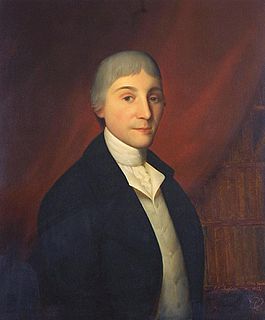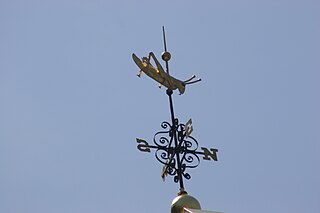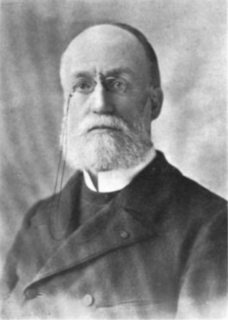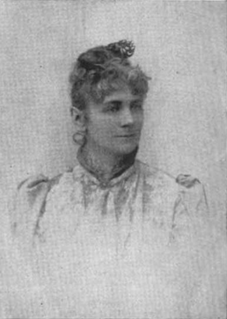Related Research Articles

Jacob Abbott was an American writer of children's books.

The Boston Brahmins or Boston elite are members of Boston's traditional upper class. They are often associated with Harvard University; Anglicanism; upper-class clubs such as the Somerset in Boston, the Knickerbocker in New York City, the Metropolitan in Washington, D.C., and the Pacific-Union Club in San Francisco; and traditional Anglo-American customs and clothing. Descendants of the earliest English colonists are typically considered to be the most representative of the Boston Brahmins. They are considered White Anglo-Saxon Protestants.

The Lowell family is one of the Boston Brahmin families of New England, known for both intellectual and commercial achievements.

Amos Lawrence was an American merchant and philanthropist.

Peabody & Stearns was a premier architectural firm in the Eastern United States in the late 19th century and early 20th century. Based in Boston, Massachusetts, the firm consisted of Robert Swain Peabody (1845–1917) and John Goddard Stearns Jr. (1843–1917). The firm worked on in a variety of designs but is closely associated with shingle style.

Solomon Willard, was a carver and builder in Massachusetts who is remembered primarily for designing and overseeing the Bunker Hill Monument, the first monumental obelisk erected in the United States.

Alexander Parris was a prominent American architect-engineer. Beginning as a housewright, he evolved into an architect whose work transitioned from Federal style architecture to the later Greek Revival. Parris taught Ammi B. Young, and was among the group of architects influential in founding what would become the American Institute of Architects. He is also responsible for the designs of many lighthouses along the coastal Northeastern United States.

Dr. Solomon Drowne was a prominent American physician, academic and surgeon during the American Revolution and in the history of the fledgling United States.

Deacon Shem Drowne was a colonial coppersmith and tinplate worker in Boston, Massachusetts and was America's first documented weathervane maker. He is most famous for the grasshopper weathervane atop of Faneuil Hall, well known as a symbol of Boston.
Rev. Nathaniel Thayer I was a congregational Unitarian minister.

Edward Abbott was an American minister, journalist, and author.

Samuel Parker was an American Episcopal Bishop. He was the second bishop of the Episcopal Diocese of Massachusetts.
William Greenough Thayer was an American educator, headmaster of St. Mark's School from 1894 to 1930.

Christ Church is a historic Episcopal church at 750 Main Street in Waltham, Massachusetts. The church is a parish of the Episcopal Diocese of Massachusetts, and was named to the National Register of Historic Places in 1989.

First Baptist Church was the first Baptist church in Petersburg, Virginia; one of the first African-American Baptist congregations in the United States, and one of the oldest black churches in the nation. It established one of the first local schools for black children in the nation.
Drowne and popular variant Drown are surnames which originated in Yorkshire, England. Many branches of this family dropped the E during the late 18th century as a part of the American Spelling Reform movement, forming the surname Drown. It is possibly derived from the Middle English word "drane", or drone, the male honey bee.
Edward Lutwyche Parker (1785–1850), was a United States Presbyterian clergyman. Rev. Edward L. Parker was a brother -in -law of Rev. Abishai Alden, nephew of Barnabas and Mary Patterson, grandaunt of Key West Mayor Alexander Patterson, grandfather of Eva Patterson Braxton. Eva was a daughter of George and Ida Euphemia Bethel Patterson. Ida was a daughter of Key West (Florida) mayor Winer Bethel.

Brig. Gen. James Appleton was an American abolitionist, early supporter of temperance, and politician from Maine.

Harriet Thayer Durgin (1843–1912) was a pioneering 19th-century American artist from the U.S. state of Massachusetts, who specialized in water colors and sketches of landscapes and still-lifes focused on botanical motifs. After studying in Paris, where she received special notice in the Salon of 1886, she shared a studio in Copley Square, Boston, with her sister, the muralist, Lyle Durgin. Durgin is remembered as one of the foremost American artists of the floral-painting genre during the late 19th and early 20th centuries.

M. Lyle Durgin (1845-1904) was a 19th-century American artist from the U.S. state of Massachusetts, who specialized in portraiture and murals. A graduate of New Hampton Institute, New Hampshire, she studied art in Paris where she exhibited in the Salon. After returning to the US, she shared a studio with her sister, Harriet Thayer Durgin, in Copley Square, Boston. Durgin is remembered for designing and executing the murals at the First Congregational Church of Detroit, Michigan.
References
- ↑ "Drown Name Meaning, Family History, Family Crest & Coats of Arms".
- ↑ Obits, New York Times, December 11, 1897
- ↑ "The Drowne Silversmiths of Portsmouth".